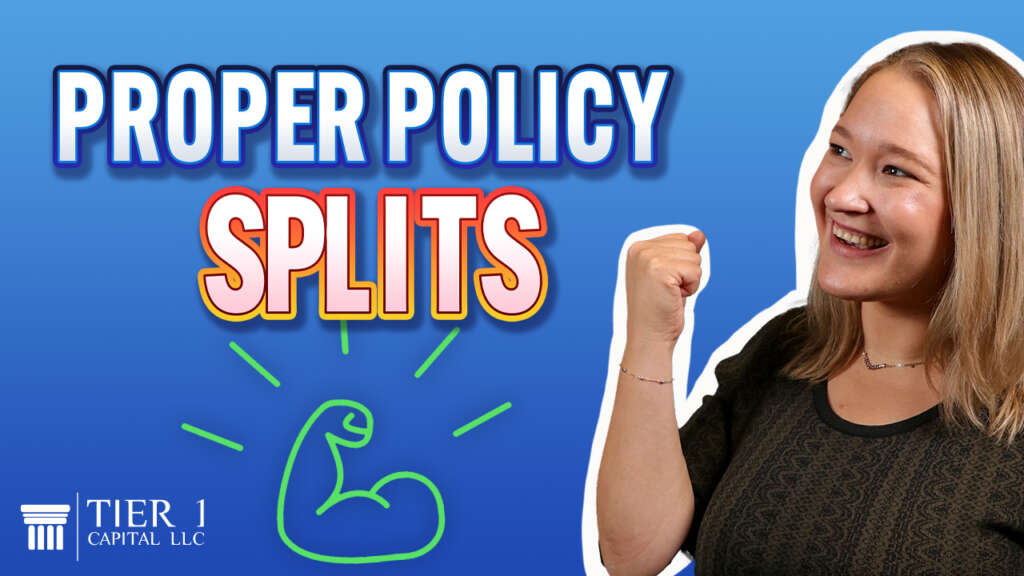
If you’re looking into the infinite banking concept using a whole life insurance policy, I’m sure you’ve heard of the different splits. Do I do a 90/10? Do I do an 80/20? Do I do a 40/60? What is the best design for me and how do I get the most out of my policies?
There is no one-size-fits-all when it comes to infinite banking. The policy design really comes down to how you actually plan on using the policy. From there, the advisor can help you design a policy that meets your goals and objectives as to how you want to use it.
When looking at the best policy design for a particular client. We certainly want to make sure we’re within their budget and that we can design the policy properly so it can perform now, as well as in the future for them.
Another thing we take into consideration when designing policies is the long-term effect of the modified endowment contract status test. You see, that test, The modified endowment contract status test, is an ongoing test. You may pass it in the first year, you may pass it in the 10th year, but you may fail that test in later years. And here’s the deal. Once a MEC, always a MEC. What that means is once that policy is a MEC, it will be a MEC forever.
It’s hard to determine when you’re first illustrating a policy if and when that policy is going to MEC because when you’re illustrating a policy, it’s only based on the current year’s dividends. But dividend scales change every year.
Let’s take a step backward. What exactly is a modified endowment contract and what effects does it have on the policy?
Well, the government wants to make sure that you’re not using life insurance as an investment because it’s not an investment. So we need to make sure that for the amount of cash you’re stuffing in that policy, there is enough death benefit to justify it.
If your policy doesn’t pass the seven-pay test, it could become a MEC. What that means is it becomes taxable like an annuity, meaning any loans or distributions above the premiums paid into the policy will be taxable and taxable as income when that is accessed.
But keep this in mind, the effects of the MEC, the fact that distributions are taxable don’t come into effect until the cash value is greater than the premiums paid in, which typically can be anywhere from seven years to 13 years down the line.
So what that means is your policy could be an MEC on day one, But you won’t have to pay taxes on that distribution until the cash value is greater than the premiums paid.
So let’s go back. What is the best policy design?
Typically with an infinite banking concept design in a whole life insurance policy, we’re looking at a 40 base and a 60 paid-up additions rider, meaning 40% of the premium is going towards supporting the base policy, The death benefit, the regular whole life insurance contract, and 60% is going towards paid-up additions and building up that cash value in the early years of the contract. This is typically a safer policy design to prevent your policy from MEC-ing down the line.
Because every situation is different, it may make sense to do a higher amount of paid-up additions in the early years. For example, if you’re just getting started and you need access to a lot of that cash value in the early years and you don’t want to tie it up in the policy, it may make sense to put on more paid-up additions with the knowledge that may cause a MEC down the line. So, again, there’s no one size fits all.
We had mentioned that there’s a 40/60 and that might be the typical best way to do it, but it doesn’t mean that that’s the way you should do it.
If you’d like to talk about your situation and what policy design best suits your needs, hop right on our calendar by clicking the Schedule your Strategy Session button on our homepage. Also, if you’d like to learn exactly how we put this process to work for our clients, check out our webinar, The Four Steps of Financial Freedom.
And remember, it’s not how much money you make, it’s how much money you keep that really matters.
